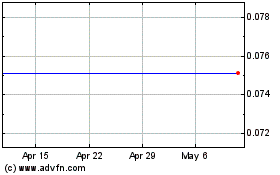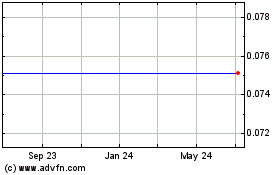By Suzanne Kapner
It took two months for activist investors to unseat Bed Bath
& Beyond Inc.'s top officials, a drama that concluded last week
when the company settled with the group. But the crisis was decades
in the making.
Its leaders built a superstore for housewares, with more than
1,500 locations that had so much merchandise that products hung
from the ceiling. But they were ill-equipped, former employees say,
to transition to a world where consumers can access thousands of
items by tapping a smartphone screen.
For the reconfigured board, which includes nine new directors,
and a yet-to-be named chief executive, the biggest challenge will
be to overhaul the company quickly enough. People close to the
company say the brand still holds sway with consumers and that the
new directors have retailing and e-commerce experience that was
lacking in the past.
Bed Bath & Beyond has already made significant technology
investments, a spokesman said, but recognizes it needs to do more.
A newly created board committee is charged with helping the company
"navigate the evolving retail environment," according to its
charter. It has no shortage of tasks to oversee, from streamlining
inventory, reducing costs, updating marketing and modernizing
stores to investing in technology and reviewing the potential sale
of assets.
Blaming the likes of Amazon.com Inc. for the troubles of
traditional retailers such as Bed Bath & Beyond, Sears Holdings
Corp. and Toys "R" Us Inc. glosses over the strategies and
decisions of the people who ran these companies for years. Other
chains, from Walmart Inc. to Best Buy Co., are adapting by turning
their stores into showrooms and buying digital startups.
Bed Bath & Beyond was stuck in the past, relying on coupons
to draw shoppers and a "pile it high" mentality for stores that
made them cluttered and hard to shop at. This account of the
company's failure to modernize is based on interviews with a dozen
former employees, executives and people close to the board.
"They lacked a clear vision and understanding of how to compete
in a new, digital world," said Amy Laskin, a former Bed Bath &
Beyond marketing executive.
The company's frugal culture, where Post-it Notes were deemed
too expensive, served it well when it was building a network of
stores. But that mind-set was a hindrance when it had to invest
heavily in technology. Its conservative leadership--"We're not in a
rush to make mistakes" was a favorite saying -- created a lack of
urgency. A website upgrade took three years, and a loyalty program
took two years to roll out.
After 27 consecutive years of gains, the company's revenue
declined last year, slipping 2.6% to $12 billion. Profits, which
were above $1 billion just five years ago, are gone. Bed Bath &
Beyond lost $137 million in the fiscal year ended March 2 -- its
first annual loss since going public in 1992.
Its shares are down more than 80% since January 2015, while the
S&P 500 retail index has more than doubled. On Friday, the
stock closed at $12.69.
The company grew from two Bed 'n Bath stores -- in New Jersey
and on Long Island -- opened in 1971 by co-founders Warren
Eisenberg and Leonard Feinstein. Both were unseated during the
activist battle. The duo met while working at Arlan's, a regional
discount chain. Mr. Eisenberg, whose family was so poor they didn't
eat in restaurants, had started as a stock boy and rose to
president.
Eventually, they expanded, pioneering a big-box format that
competed with department stores and mass merchants. Instead of a
centralized buying team, store managers purchased 70% of the
products, allowing them to customize the selection by location.
Shoppers loved the treasure hunt.
"I can spend hours in there," said Elizabeth Barnett of
Cincinnati, who briefly worked at the chain as a bridal consultant
in 2010. "I like to go in the store and look for things I didn't
plan to buy."
The co-founders ran the business for decades. In 2003, they
handed the CEO role to Steven Temares, but remained co-chairmen.
Mr. Temares, a lawyer who had joined the company in 1992, varied
the size of stores depending on the size of the market. Locations
range from 3,500 square feet to 100,000 square feet, according to
securities filings.
That proved an advantage during the recession. The stores of its
closest competitor, Linens 'n Things Inc., averaged 30,000 square
feet, according to securities filings. The large boxes bled money
faster during the economic downturn. Linens 'n Things closed its
stores in 2008, and Bed Bath & Beyond picked up much of its
market share.
Some executives worried it wasn't keeping pace with Amazon and
other competitors such as HomeGoods, owned by TJX Cos.
Managers often got bogged down over minor details. At one
meeting in 2017 about marketing displays, five senior executives
weighed in, recalled Ms. Laskin, the former marketing
executive.
The company was so tightfisted that executives used scrap paper
instead of Post-it Notes. Until recently, many employees didn't
have laptops. Some bought their own computer monitors because the
company-issued ones were outdated.
"Frugalness was part of their success," said Scott Hames, who
spent nearly two decades with the company and was the marketing and
analytics chief before he left last year. "But being frugal can
blind you. They lacked the ability to take risks."
That frugality extended to technology investments, which totaled
about $200 million last year -- a figure Jefferies analyst Jonathan
Matuszewski calls "underwhelming" and pales in comparison to many
rivals.
Bed Bath & Beyond launched its website in 1999, but gets
only about 20% of sales from e-commerce. Williams-Sonoma Inc., an
upscale competitor, gets more than 50% of its sales online. Even
after Bed Bath & Beyond updated its website five years ago,
many functions remained antiquated. Instead of automatically
uploading product information, employees had to manually enter the
descriptions and photos.
At warehouses that fulfilled online orders, products were picked
and packed manually. At one point, the warehouses fell so far
behind, the digital team was asked to suspend marketing for several
weeks.
Many directors lacked the expertise to help steer the company
through the upheaval. After one director said she only shopped at
Williams-Sonoma, employees were instructed to overhaul the cookware
department. Updated fixtures and signs were added to a few stores,
but the new look was never rolled out.
It was a recurring theme. The company would test new store
concepts, but rarely expand them to the entire chain. A current
test at about 20 locations adds more home décor and food items,
while making the stores less cluttered and easier to shop. Mr.
Temares, the longtime CEO, told analysts in April that sales at the
test stores were running ahead of the company average. A month
later, he was gone.
Write to Suzanne Kapner at Suzanne.Kapner@wsj.com
(END) Dow Jones Newswires
June 02, 2019 05:44 ET (09:44 GMT)
Copyright (c) 2019 Dow Jones & Company, Inc.
Bed Bath and Beyond (NASDAQ:BBBY)
Historical Stock Chart
From Mar 2024 to Apr 2024

Bed Bath and Beyond (NASDAQ:BBBY)
Historical Stock Chart
From Apr 2023 to Apr 2024
